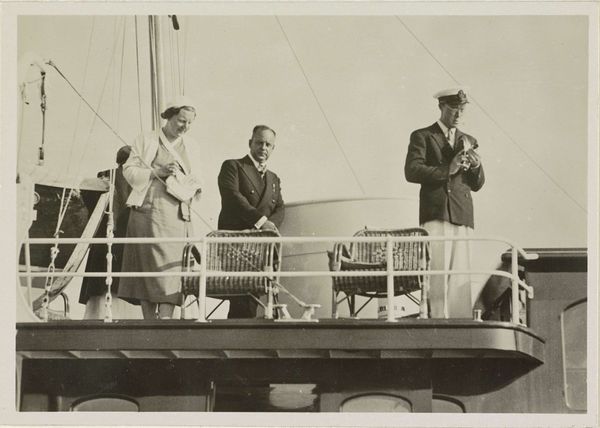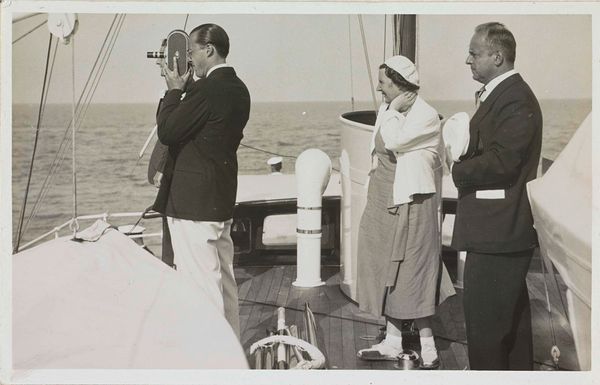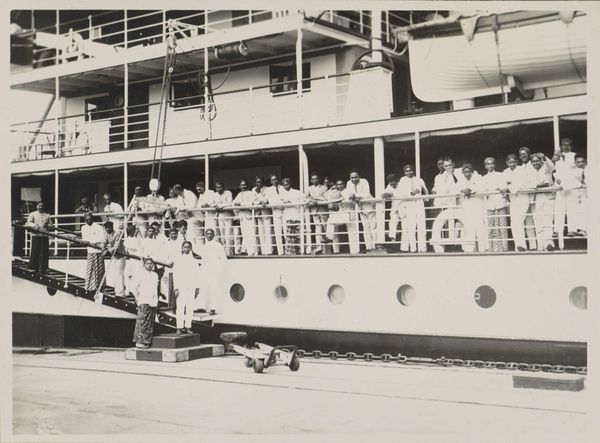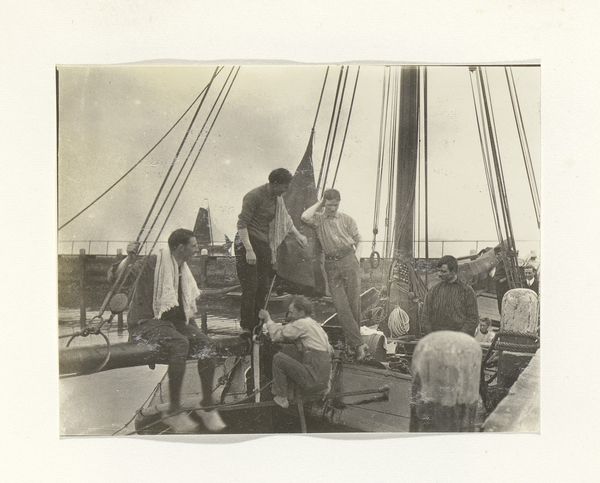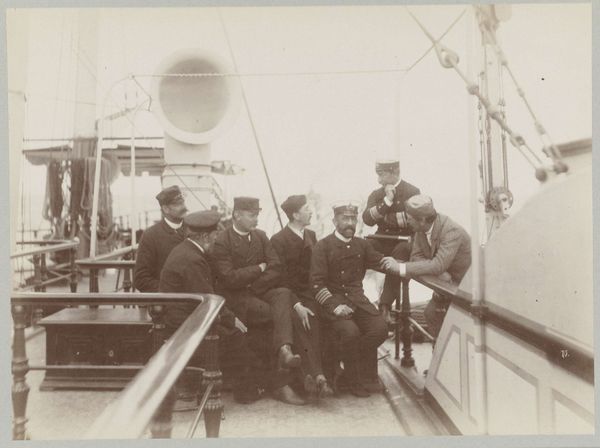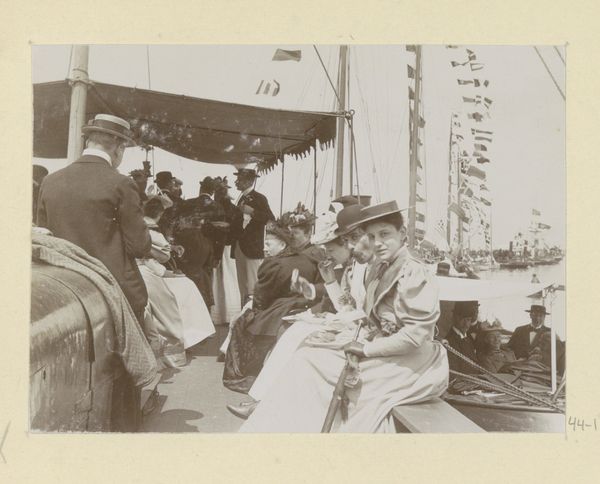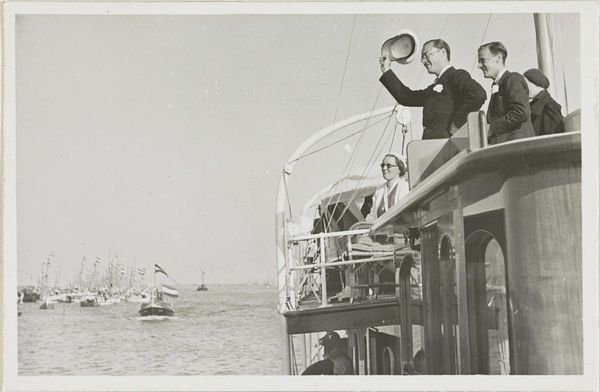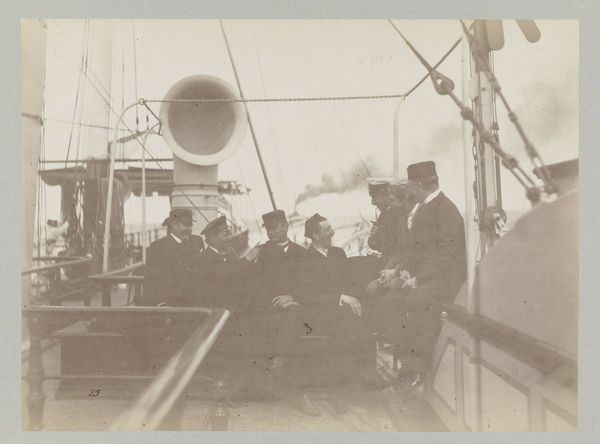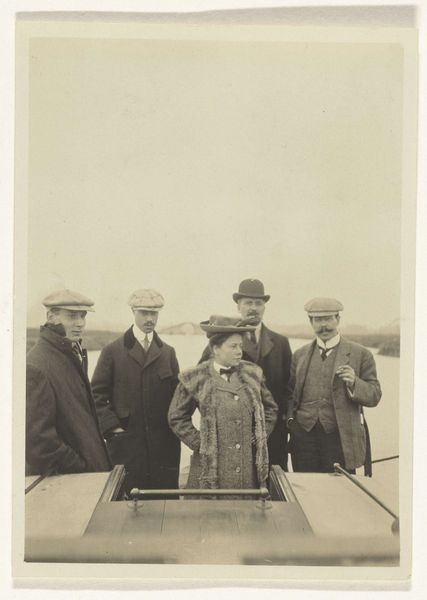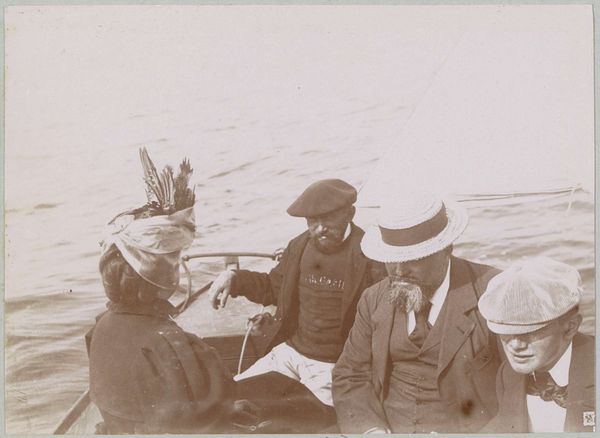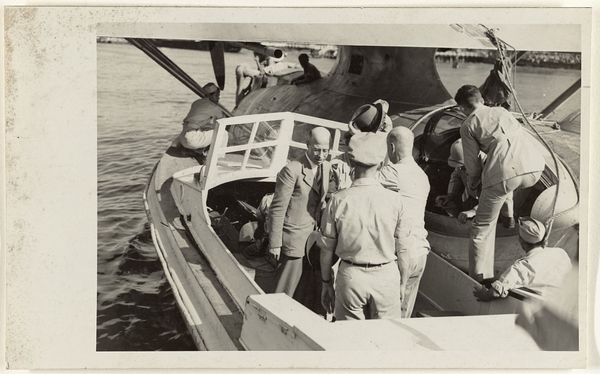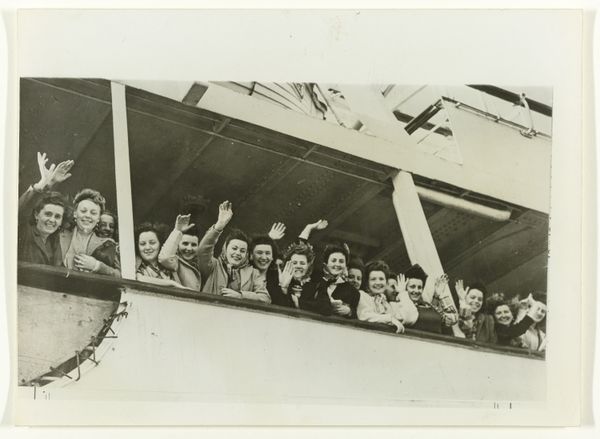
Bezoek van Juliana, koningin der Nederlanden, en Bernhard van Lippe-Biesterfeld aan het prinsenjacht Hr. Ms. 'Piet Hein' te Muiden op 28 augustus 1937 Possibly 1937 - 1938
0:00
0:00
anonymous
Rijksmuseum
photography, gelatin-silver-print
#
portrait
#
outdoor photo
#
photography
#
gelatin-silver-print
#
monochrome photography
#
history-painting
#
monochrome
Dimensions: height 151 mm, width 106 mm
Copyright: Rijks Museum: Open Domain
Curator: Welcome. The work before us is a gelatin-silver print titled "Bezoek van Juliana, koningin der Nederlanden, en Bernhard van Lippe-Biesterfeld aan het prinsenjacht Hr. Ms. 'Piet Hein' te Muiden op 28 augustus 1937," dating roughly from 1937-1938. It's an intriguing photographic document from the Dutch royal family, held here at the Rijksmuseum. Editor: My immediate reaction is to the formality. The subdued tones create an almost solemn atmosphere. It’s also fascinating how the composition emphasizes verticality – from the mast to the figures – which certainly adds to the grandeur, wouldn't you agree? Curator: Absolutely. And what this image captures is a carefully constructed representation of royal authority. Consider the setting—the royal yacht—and the careful positioning of Juliana and Bernhard, projecting an image of national strength and unity at a politically sensitive time in Europe. The almost detached view of the photographer from below only elevates the family. Editor: The light is doing so much work here, carving out the characters’ faces, capturing their gestures, highlighting how their forms emerge and disappear slightly within the darker boat hull. And that symmetry -- even if subtle, is remarkable; their postures echo each other, solidifying the unity you just spoke of. Curator: Indeed, the photograph was created and disseminated to construct and promote a narrative of stability. There is also some speculation that this meeting between Juliana and Bernhard was meant to calm political nerves with rumors of rising Naziism given Bernhard's German origins. Editor: Even looking at their garments creates another dimension. They appear stiff. Restrained. Yet the image also humanizes them, perhaps against the backdrop of an increasingly uncertain time? Curator: Yes, it is tempting to read deeper meaning into this moment of constructed intimacy, as you point out; in the pre-war era. Beyond its immediate subject matter, the photograph now functions as a lens through which we can examine the role of photography in shaping public memory and legitimizing power structures. Editor: A well crafted arrangement, to be sure. It goes to show how formal choices intersect with socio-historical narrative to create rich complexity within the image. Curator: Agreed. A reminder that even seemingly simple photographic portraits can offer invaluable insights into a particular era’s visual culture and power dynamics.
Comments
No comments
Be the first to comment and join the conversation on the ultimate creative platform.
